
Abbotsford is a historic country house in the Scottish Borders, near Galashiels, on the south bank of the River Tweed. Now open to the public, it was built as the residence of historical novelist and poet Sir Walter Scott between 1817 and 1825. It is a Category A Listed Building and the estate is listed in the Inventory of Gardens and Designed Landscapes in Scotland.

Balmoral Castle is a large estate house in Aberdeenshire, Scotland, and a residence of the British royal family. It is near the village of Crathie, 9 miles (14 km) west of Ballater and 50 miles (80 km) west of Aberdeen.

The ruins of Linlithgow Palace are located in the town of Linlithgow, West Lothian, Scotland, 15 miles (24 km) west of Edinburgh. The palace was one of the principal residences of the monarchs of Scotland in the 15th and 16th centuries. Although maintained after Scotland's monarchs left for England in 1603, the palace was little used, and was burned out in 1746. It is now a visitor attraction in the care of Historic Environment Scotland.

Kildrummy Castle is a ruined castle near Kildrummy, in Aberdeenshire, Scotland. Though ruined, it is one of the most extensive castles dating from the 13th century to survive in eastern Scotland, and was the seat of the Earls of Mar. It is owned today by Historic Environment Scotland and is open to the public as a scheduled ancient monument with gardens that are included in the Inventory of Gardens and Designed Landscapes in Scotland.

Isabella Lucy Bishop was an English explorer, writer, photographer and naturalist. Alongside fellow Englishwoman Fanny Jane Butler, she founded the John Bishop Memorial Hospital in Srinagar in modern-day Kashmir. She was also the first woman to be elected as a fellow of the Royal Geographical Society.

Cynthia Evelyn Longfield was an Anglo-Irish entomologist and explorer and the first woman member of the Entomological Society. She was an expert on the dragonfly and was nicknamed "Madame Dragonfly". She travelled extensively and published The Dragonflies of the British Isles in 1937. She worked as a research associate at the Natural History Museum, London, and was the expert on the dragonflies there, particularly on African species.
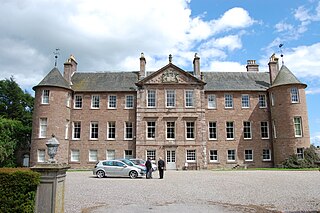
Brechin Castle is a castle in Brechin, Angus, Scotland. The castle was constructed in stone during the 13th century. Most of the current building dates to the early 18th century, when extensive reconstruction was carried out by architect Alexander Edward for James Maule, 4th Earl of Panmure, between approximately 1696 and 1709. The castle is a 37,748 square feet (3,506.9 m2) Category A listed building and the grounds are included in the Inventory of Gardens and Designed Landscapes in Scotland.
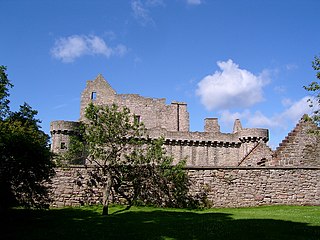
Craigmillar Castle is a ruined medieval castle in Edinburgh, Scotland. It is three miles (4.8 km) south-east of the city centre, on a low hill to the south of the modern suburb of Craigmillar. The Preston family of Craigmillar, the local feudal barons, began building the castle in the late 14th century and building works continued through the 15th and 16th centuries. In 1660, the castle was sold to Sir John Gilmour, Lord President of the Court of Session, who breathed new life into the ageing castle. The Gilmours left Craigmillar in the 18th century for a more modern residence, nearby Inch House, and the castle fell into ruin. It is now in the care of Historic Environment Scotland as a scheduled monument, and is open to the public.
Muckhart commonly refers to two small villages in Clackmannanshire, Scotland, Pool of Muckhart and Yetts o' Muckhart. Muckhart is one of the Hillfoots Villages, situated on the A91 around 3 miles northeast of Dollar. The Gaelic name, Muc-àird, comes from muc ("pig") + àird ("height"), and may derive from the fact that the surrounding fields may once have been used for pig farming.

Fingask Castle is a country house in Perth and Kinross, Scotland. It is perched 200 feet (61 m) above Rait, three miles (5 km) north-east of Errol, in the Braes of the Carse, on the fringes of the Sidlaw Hills. Thus it overlooks both the Carse of Gowrie and the Firth of Tay and beyond into the Kingdom of Fife. The name derives from Gaelic fionn-gasg: a white or light-coloured appendage.
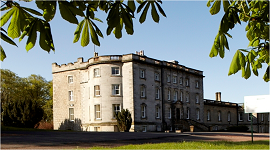
Murdostoun is an estate in North Lanarkshire, Scotland, which includes a castle, which lies on the South Calder Water near the village of Bonkle in the parish of Shotts, North Lanarkshire, Scotland. The name Murdostoun was derived from the words Murthock and Toun which meant dwelling of Murthock. Murdostoun can refer to the ancient barony of the Scott and then the Inglis clan, the castle built by the Scotts or a bridge over the South Calder Water.
Anne Hamilton, Countess of Huntly, was a Scottish noblewoman and a member of the powerful Hamilton family which had a strong claim to the Scottish crown. Her father James Hamilton, Duke of Châtellerault, 2nd Earl of Arran was heir presumptive to the throne of Scotland after Mary, Queen of Scots prior to the birth of the latter's son Prince James in 1566. Anne was the wife of George Gordon, 5th Earl of Huntly, Lord Chancellor of Scotland and a chief conspirator during the reign of Queen Mary.

Kinneil House is a historic house to the west of Bo'ness in east-central Scotland. It was once the principal seat of the Hamilton family in the east of Scotland. The house was saved from demolition in 1936 when 16th-century mural paintings were discovered, and it is now in the care of Historic Environment Scotland. The house now consists of a symmetrical mansion built in 1677 on the remains of an earlier 16th- or 15th-century tower house, with two rows of gunloops for early cannon still visible. A smaller east wing, of the mid 16th century, contains the two painted rooms. The house is protected as a Category A listed building.

Isobel Wylie Hutchison was a Scottish Arctic traveller, filmmaker and botanist. Hutchison published poetry, books describing her travels to Iceland, Greenland, Alaska, and the Aleutian Islands, and articles in National Geographic and other magazines. She lectured frequently, using her films, photographs and paintings to illustrate her talks. Her papers were gifted to the National Library of Scotland by her long-time friend Medina Lewis.
John Christie FRSE (1824-1902) was a Scottish industrialist, arboriculturalist and landowner.

Newhailes House is a Palladian style country house which stands in 80 acres of parkland on the edge of the small town of Musselburgh in East Lothian, Scotland. It is a Category A listed building which is now occupied and maintained by the National Trust for Scotland.
Mary (Dudley) Sutton, Countess of Home (1586–1644), was a landowner, living in England and Scotland.
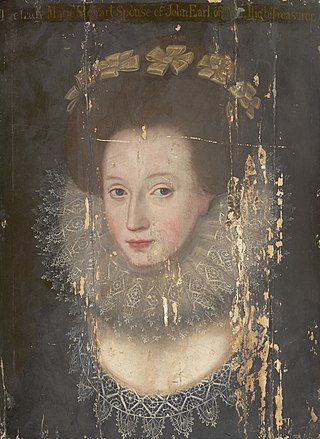
Marie Stewart, Countess of Mar (1576–1644) was a Scottish courtier. She was the daughter of Esmé Stewart, 1st Duke of Lennox and Catherine de Balsac d’Entragues (d. c.1631) and a favourite of James VI of Scotland. After her marriage, as was customary in Scotland, she did not change her name, and signed her letters as "Marie Stewart".
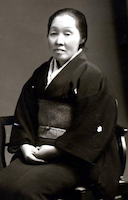
Taki Handa (1871–1956) was a Japanese horticulturist, best known for designing and directing the construction of a Japanese garden in Scotland in 1908.
Colonel Sir Robert "Bobby" Christie Stewart KCVO CBE TD was a Scottish landowner who had a military career in the British Army and was a Lord Lieutenant of two counties in Scotland. He was generally referred to in the community as R. C. Stewart.

















